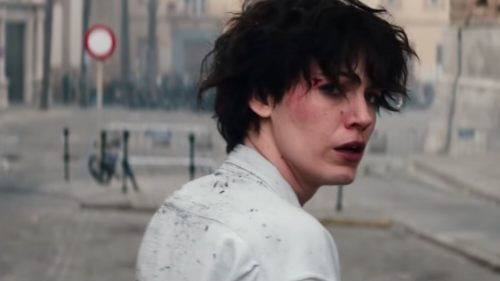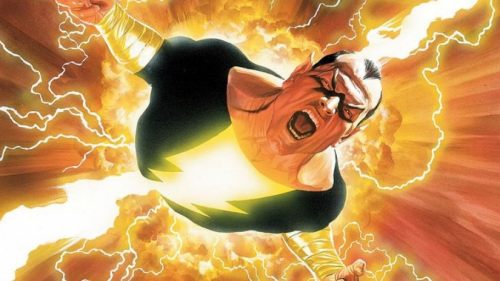THE SHALLOWS Review: Sharp-Toothed Summer Schlock
There will be Jaume Collet-Serra retrospectives at Lincoln Center in twenty years. The filmmaker, largely ignored today, has been slowly building a body of schlockily fantastic films that are actually exceptionally made. Orphan is his masterpiece (and I am not using that word lightly), but his House of Wax remake is a stunner and, of his Liam Neeson films, Non-Stop remains a high water mark in modern frommagery.
Collet-Serra has two secret weapons: he never winks at the audience and he’s a damn fine filmmaker. He understands the language of film in ways that the more acknowledged masters do, but he uses this understanding for genre films that are often absurd, if not knowingly stupid. There’s something perverse about his filmmaking - he’s a director of extraordinary vision and skill who is spending his time making moderately low budget movies that are often mistaken for bad films. The reality is that the stuff that Collet-Serra cares about - individual moments, building tension, ludicrous reveals - he crafts with the utmost care, and many audiences can’t see past the silliness.
The Shallows is the latest film in his oeuvre of oddities; from the very first trailer this movie - Blake Lively vs a shark - looked like a silly trifle at which people would laugh. But while Collet-Serra has leaned very hard into that in the past (Non-Stop is just ridiculous), The Shallows is perhaps his artiest film, the one most likely to be confused with a Real Movie by the squares who have not yet understand from where the Catalan filmmaker is coming. There are gorgeous shots, expressive editing choices and a surprising emotional throughline… all leading up to a really over-the-top final battle against the shark that maybe ruins it?
Don’t get me wrong: I want Collet-Serra to be Collet-Serra. It’s just that for most of this movie he’s displaying a bit of a different aesthetic. The Shallows is a survival horror movie, and the shark is barely seen for the first 80% of the film. Working from a script by Anthony Jaswinski, Collet-Serra approaches the material with a fairly stripped down approach, keeping the film in the moment at all times. I understand that earlier drafts of the script featured flashbacks, but the final film is all linear time, and it works best that way.
Blake Lively is Nancy, who has come to a secret Mexican cove to visit the beach her now-dead mother came to in 1991, when Nancy was just a nugget in her belly. We learn obliquely that Nancy’s mom’s death has impacted her in a big way - she’s taken time out of medical school to go on walkabout, and it’s unclear what her future plans are. She watched her mother fruitlessly battle cancer, and she is wondering if it isn’t better to just give up now and waste her life away. You can already see the outline of her arc, right? It’s not exactly great lit.
Anyway, Nancy goes surfing at this secret beach and she stumbles upon the mutilated carcass of a whale, as well as the Great White Shark that mutilated it. After the shark takes a huge bite out of her leg Nancy begins a battle for her own survival, going from clinging to the whale to clinging to a rock to clinging to a buoy to finally confronting the snaggle-toothed devil of the deep. Her only companion? A wounded seagull who steals pretty much the whole movie.
Collet-Serra’s camera loves Lively; he moves his lens up and down her body like a gentle caress. But this movie isn’t just leering; there’s an intriguing girl power thing happening here, if an incredibly subtle one. When Nancy washes up on a rock, bleeding terribly from some deep fucking cuts in her leg, she sutures the wound with… her beautiful earrings. She uses her necklace to tighten the sutures. There’s something empowering about her jewelry saving her life, and I actually wish that her girliness had continued to save the day.
Lively herself is fine. Aside from a particularly egregious face-replacement bit during a surfing scene, Lively has the physicality required for what is largely a physical role - squirming and suffering and existing in the moment. Her early stuff, the scenes where we’re supposed to get to know Nancy, are the scenes that don’t fully work. Again, she’s fine, and she has a malleability that I could see Collet-Serra returning to in future films the way he returned to Liam Neeson’s unmalleability in a number of films, but if she had slightly more going on early in the film I think the whole movie would have hit the next level.
The good news is that her co-star saves the day. Lively spends most of the film acting opposite Steven Seagull (that’s his name in the credits), and he’s frankly incredible. He’s just a bird - not CGI, not silly, just kind of hanging around and squawking and at one point riding a surfboard. It’s hard to feel anything for birds, especially dead-eyed gulls, but Steven has a natural charisma and great chemistry with Lively. I found myself deeply interested in his story and his survival, and every time it looked like the film was about to sacrifice him for a cheap thrill I became actually angry.
That relationship really makes the movie, and I’m not being snarky. Watching Nancy care for this wounded bird is maybe the most humanizing thing she does, way more humanizing then the Facetime call she makes to her family early on. In another film the castaway might consider killing and eating the bird, but it clearly never crosses Nancy’s mind. She’s not making it a pet, either. It’s just another being on a rock with her, and she eventually takes care of it. As she comes to her final moments, thinking that she might end up chum, she makes sure to help the bird. It could be seen as a touch ‘save the cat,’ but it truly works here, and I think her caring for the bird is an extension of the film’s subtle girl power motif.
All of that is punctuated by the shark. It swims relentlessly around Nancy’s rock, anchored by the easy eating of the whale carcass floating just yards away. The shark is a constant presence, and for most of the film Collet-Serra makes it a terrifying one. He learned the lesson of Jaws, which is to keep the beast offscreen as much as possible, and - except for a crummy CGI jump scare in the prologue - the shark is hidden for the first two acts. The fin surfaces, or a figure blots out the underwater camera. Sometimes Collet-Serra takes to an aerial shot and shows us the outline of the shark as it circles. All of these scenes build the menace of the monster, maintaining its unknowable alien quality.
Until the end! At the end the shark is jumping out of the water and eating buoys and all other sorts of unrealistic, vengeance-based behavior. That worked in Jaws, where the shark is slowly revealed to be more than just an animal, but there’s no such revelation here. The movie treats the shark as a force of nature for most of the runtime and then switches gears and makes it a villain.
Of course what do you expect from a Collet-Serra film? He’s incredibly subtle (for him) for most of the film, and you can feel him itching to stretch out in the finale. He wants to get big and silly, and does he ever. It doesn’t work for me, but it doesn’t totally ruin the film either. I found myself in the strange position of for once wishing Collet-Serra would just rein it in a little bit. Just a little bit.
The Shallows is basically “What if the girl from the opening of Jaws survived and fought back?” and it works as such. Not gory enough to turn off casual audiences, but still with enough carnage to satisfy weirdos like me (one guy crawling away from his own severed lower section had me cackling, upsetting the person sitting next to me, who was just horrified by the grue), The Shallows is a perfectly crafted summer confection. It isn’t as good as the best of Collet-Serra, but it may be among his most consistent, and it’s definitely his most beautiful film. It’s also one of his better crafted, and he has successfully picked up the challenge that Spielberg laid down all those years ago, once again making us too afraid to get in the water.



